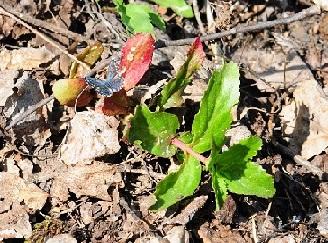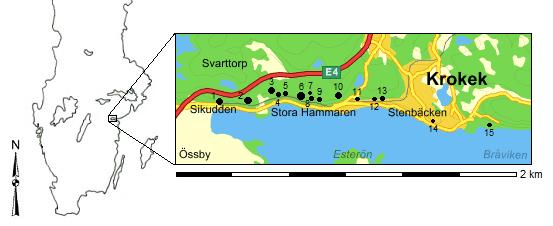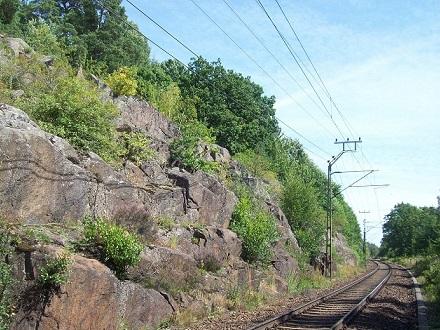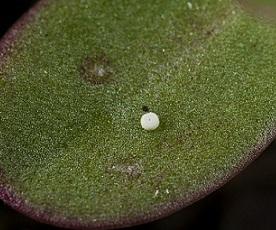Methods
Study species
Scolitantides orion adults start to emerge in early May and the flight period ends in late June. The adults are attracted to five major nectar plants; Spergula morisonii, Geranium sanguineum, Viola tricolor, Lychnis viscaria and Crepis spp. A few days after adult emergence, females start to oviposit. In Sweden, the species oviposit on Sedum telephium ssp. maximum (hereafter reffered to as S. maximum).
Eggs develop during two to three weeks, and in early June they hatch as larvae. The larval stage lasts during 31 days during which the larvae feed on S. maximum. The larvae may form facultative associations with ants in which larvae provide ants with sugar-rich secretions while ants are thought to protect larvae from predators. The pupae are formed in early August, and stay dormant under rocks or in cliffs to the following year or the year thereafter when they hatch into flying adults.

Study area
The study was conducted in a region north of the bay Bråviken in Östergötland County. This region is dominated by rock outcrops and slopes with sparse vegetation and mixed woodland. It is partly fragmented by human settlements, and a railway runs next to the rock outcrops and slopes in some parts of the region.
A total of 15 sites in Bråviken were chosen based on the number of adult individuals observed in each site during the years 2009-2011. The sites represented areas with none to a high number of observed adults. They included one or more rock outcrop or slope, seemingly suitable for S. orion, and potentially unsuitable areas such as dense woodlands.


Species surveys
Two surveys were conducted between 10th May and 1st August 2012; the adult survey and the egg survey.
Adult survey
The adult survey was carried out in all 15 sites during the peak flight period. Adult occurrence and abundance was determined by walking in line transects and recording all individuals 2.5 m ahead and to the sides. Each site was surveyed once. When spotting an individual, several environmental variables were recorded such as inclination, cover of trees and bushes, proportion of bare rock and number of nectar plants and host plants.
To compare adult occurrence with the composition of sites, 30-60 points were systematically selected in each site and visited. The points were examined with regard to the same environmental variables as when finding adults.
Egg survey
The egg survey was carried out in seven of the 15 sites during the egg peak period. These sites were surveyed for occurrence and abundance of eggs. Host plant choice of ovipositing females was examined by walking in line transects of 2 m width, and recording all stems of S. maximum with and without eggs within certain plots along the transect. Several environmental variables were recorded such as inclination, cover of trees and bushes, proportion of bare rock and bare ground, vegetation height, number of surrounding host plants, host plant height and number of leaves on host plant.

Statistical analyses
Data from the adult survey and egg survey was analysed with zero-inflated regression models in R. These models include a binomial sub-model for the relationship between occurrence and environmental variables, and a count sub-model for the relationship between abundance and environmental variables. Zero-inflated regression models are used for count data with an excess number of zeroes. For the adult survey, data was analysed from a total of 472 points of which adults were found on 20 % of the points. The data was derived from eight sites where at least seven adults had been observed in each site. For the egg survey, data was analysed from a total of 879 S. maximum plants of which 24 % had S. orion eggs. The data was derived from six sites where at least 30 eggs had been found in each site.
Responsible for this page:
Director of undergraduate studies Biology
Last updated:
05/22/13
